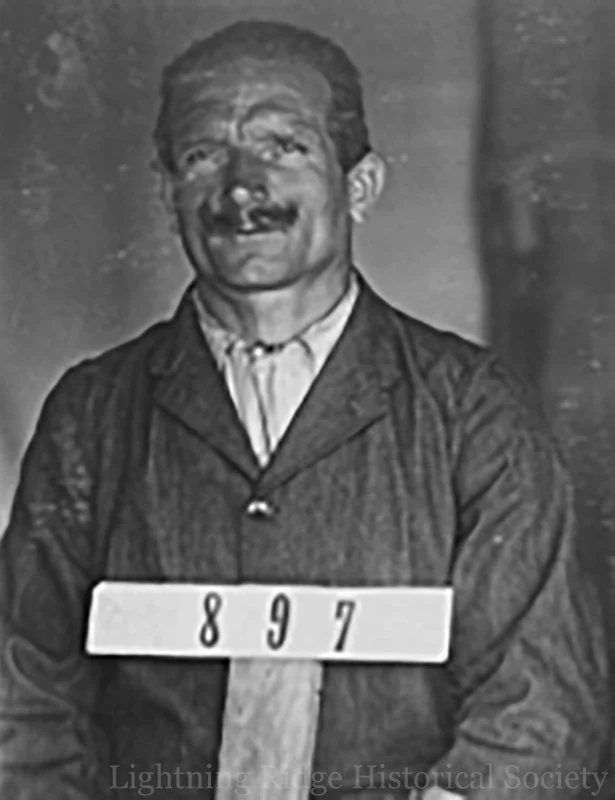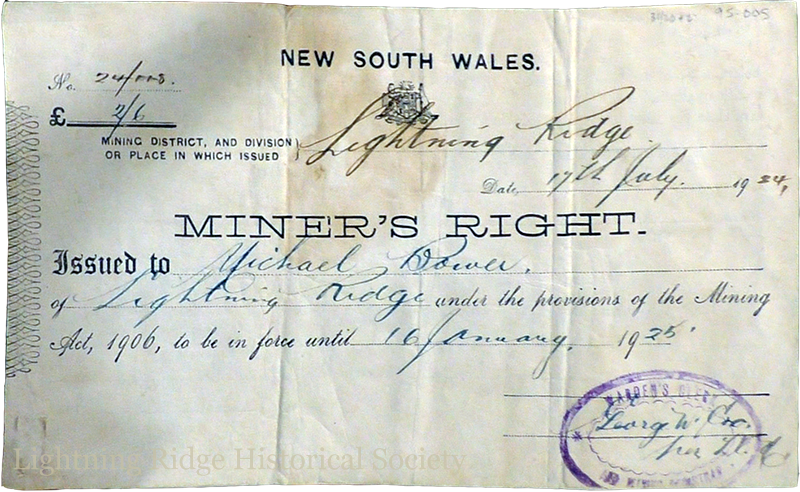Mick Bauer
Mick Bauer during his time in the South Australian internment camp, World War I. Photograph courtesy of NAA.
Michael “Mick” Bauer (sometimes Bower) was born 12 December 1888 to Johann Georg Bauer and Margaretha Barbara Blesteiner. Mick was a German national who arrived in Australia in October 1911. He was held in an internment camp in South Australia during World War I.
Bauer was one of the pioneer opal miners on the Coober Pedy opal fields. He came across from Coober Pedy to Lightning Ridge in 1920, along with Harry Zack and George Low. In the late 1920s, Bauer went prospecting in Queensland with Harry Zack and Charlie Nettleton. After the stint in Queensland, Bauer returned to Lightning Ridge and mined at the Grawin, Glengarry, Nine Mile and Coocoran opal fields.
Bauer was a qualified slaughterman and sausagemaker, and worked for the Lightning Ridge butcher in the late 1930s.
Mick Bauer and Fred Bodel, 1961. Stuart Lloyd, LRHS collection.
He was naturalised in Australia in February of 1939.
An adept opal cutter, Mick cut the famous “Fireball” stone in 1955.
Mick Bauer passed away on 12 August 1971 at the age of 82 and is buried in the Lightning Ridge Cemetery.
“Asked would he like to return to Germany, Mick said, ‘No, even a mule would stay where the feed is better.’”
Miner’s Right issued to Mick Bauer in 1934.
“My best mates, Harry Zack, George Low, Arthur Eager and Frank McKenna. Charlie Nettleton was the best. All were good miners. Otherwise I wouldn’t have worked with them.”
Article: Research by Leisa Carney, edited by Russell Gawthorpe. LRHS research compiled by Len Cram and Barbara Moritz. Sources: The Lightning Ridge Book, Stuart Lloyd, 1967, pp. 9, 18; Lightning Ridge - The Home of the Black Opal: Unique to the World, Gan Bruce, 1983, p. 56; The Lightning Flash Newspaper, 27 August 1971, 26 April 1972, 22 May 1975, 19 November 1987; The Walgett Spectator, 23 August 1928; A Journey With Colour: A History of Lightning Ridge Opal 1873-2003, Len Cram, 2003, p. 265.



